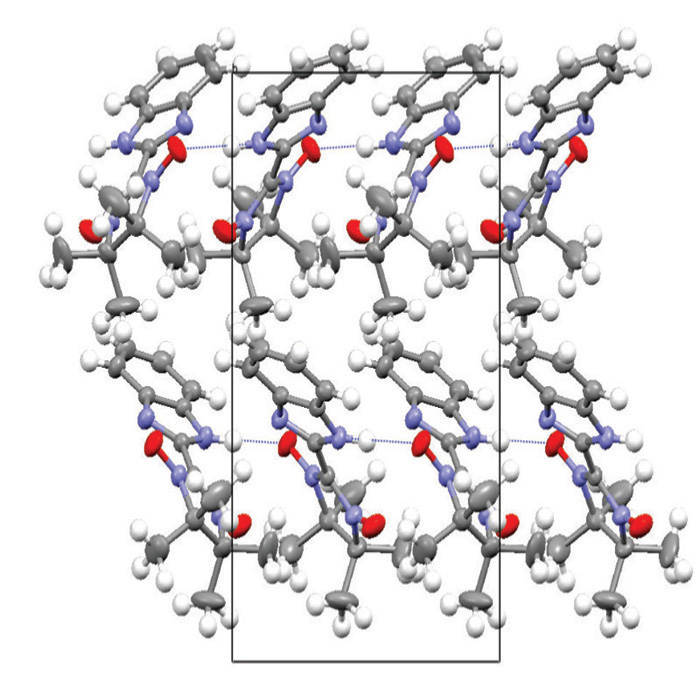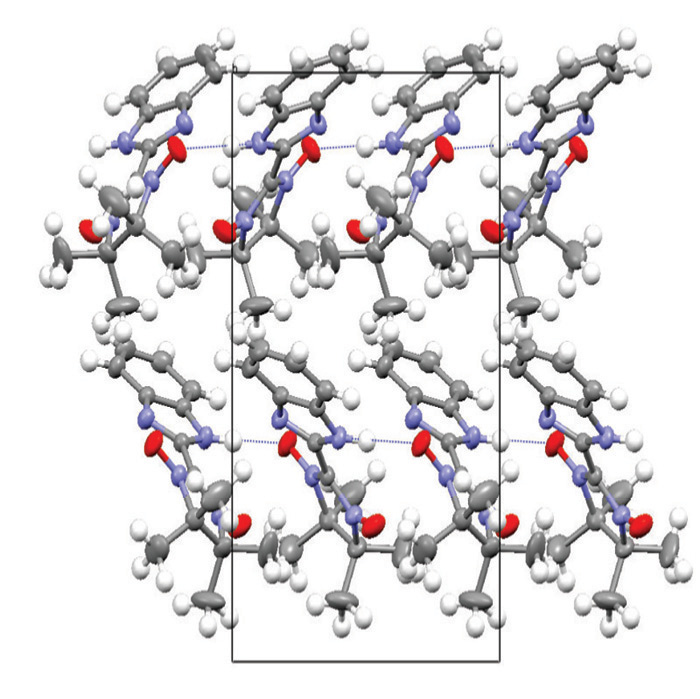An all-organic almost one-dimensional ferromagnet
Organic magnets provide a fascinating playground for testing models of magnetism, as rich carbon chemistry allows one to tune the magnetic, optical, and other properties of these materials. Nitronyl nitroxides are a family of particularly versatile organic radicals, which provided the first example of a purely organic ferromagnet p-NPNN, formed by chains of weakly interacting molecules.
In a Rapid Communication published in Physical Review B, Tadashi Sugano and collaborators from Japan and the UK use muon-spin rotation and electron spin resonance techniques to study 2-benzimidazolyl nitronyl nitroxide ( 2-BIMNN), another member of the nitronyl nitroxides family. They find that 2-BIMMN displays long-range ferromagnetic ordering, with a transition temperature of Tc=1K. In the short list of quasi-one-dimensional purely organic ferromagnets, 2-BIMMN turns out to be especially interesting, as the ratio of the transition temperature to the exchange energy J that describes intrachain spin-spin interactions is small, indicating that the coupling between different chains is extremely weak, and therefore 2-BIMMN can serve as a nearly ideal model of a one-dimensional ferromagnetically coupled spin chain. – Ashot Melikyan





